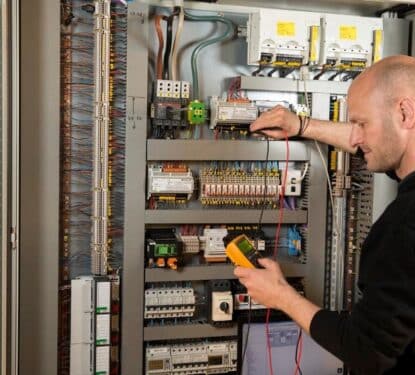In the early days of smart technology for energy efficiency in buildings we used to say, “buildings make up 40% of total energy consumption,” and that “with this smarter approach to energy efficiency we can reduce that to be greener and cleaner while reducing the strain on our grids.”
In the years since the smart building came to the fore, we have seen technologies advance and the accumulation of data provide unprecedented insight on our energy use. Each technology advancement and data collection milestone promises greater and greater efficiency, so it would be logical to think we have made a dent in consumption statistics. The reality however, is that buildings still make up 40% of overall electricity consumption despite the smart building “revolution".
Currently, only 14% of commercial buildings are measuring and tracking their energy use, let alone employing full smart building solutions. This is a missed opportunity that contributes to the estimated $120 billion wasted in commercial energy costs each year, according to the US Energy Information Administration (EIA). The EIA publishes detailed estimates for energy consumption in specific years in residential and commercial buildings, and also publishes estimates for heating, ventilation, air conditioning (HVAC), and lighting in manufacturing facilities.
“Buildings are obviously essential to our daily lives. We live, work, shop, and spend the majority of time inside of them. The reason buildings make up such a large slice of our energy consumption pie is because we need them — even more motivation to improve how they function,” suggests James McPhail, CEO of Zen Ecosystems.
McPhail believes buildings are such small steps away from significant energy savings that it seems crazy so few are installing energy management systems, which would save money for the individual, while bringing about huge energy benefits across the grid area. “Commercial buildings should no longer operate with a blind eye toward energy optimization — especially considering energy consumption can be cut dramatically with simple adjustments,” McPhail added.
Smart #energymanagement is the new status quo! Read Zen Ecosystems' CEO James McPhail's article in @facilityexec: https://t.co/Oz1Gk2Z6DJ pic.twitter.com/TAjYTTNo8b
— Zen Ecosystems (@ZenEcosystems) August 31, 2017
In one example, California headquartered retailer National Stores had more than 350 buildings across the US with little or no energy management system in place. Until recently, the company relied on its staff to decide if and when lights, cooling and heating systems should be turned on or off, hoping they would act with power efficiency in mind. In a culture not known for power or fuel efficiency mindset, this inevitably led to poor results in comparison to what smart tech promises.
To address this issue, National Stores explored simple, “set-it-and-forget-it” systems that could deliver immediate cost savings and implemented with minimal modifications to its current infrastructure, i.e. limited store closures. They targeted building HVAC, their most wasteful system, with IoT connected hardware and software. Using this simple yet comprehensive energy management platform, National Stores experienced a reduction in energy consumption of 25% over the previous year, across its portfolio of buildings.

“Facility managers have significant opportunities to reduce building energy use, but the solution needs to be simple with a quick ROI to be widely adopted. Fortunately, smart energy management innovations are now making effective solutions accessible, without requiring the forfeit of precious time and resources,” McPhail explains.
Obviously pleased with the results, National Stores now wants to take their energy management a step further. The firm intends to give their rooftop HVAC units the ability to communicate with one another in order to manage peak energy demands. The system will turn off units where possible and harmonize the activation of different units for maximum efficiency. National Stores expect a further 15-25% saving with this greater focus on peak demand.
“Energy management systems always seemed like they weren’t worth the hassle,” said Jimmy Lee, former energy manager for National Stores after the project was in place at the retailer’s facilities. However, “installation has been a snap, and since it’s so easy to use we’re already making a big dent in our electricity bills.” he added.
Examples like these underline the need for smart building solution providers to focus on the low hanging fruit of energy saving in order to get new clients on board. Simple, affordable and undisruptive energy management systems will function as the gateway products in the smart building movement. Once facility owners and managers see the benefits and attractive returns on investment they will no doubt be hooked, leading them to harder smart building solutions that will bring about the efficiency revolution we have all been craving.
[contact-form-7 id="3204" title="memoori-newsletter"]



